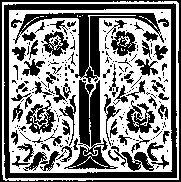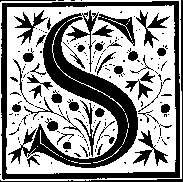Skåne
 he term "people" figures rather often in place names and institutions
here. The other day, I visited Malmö and explored, among other things,
the people's park (Folkets Park), a dowdy version of Copenhagen's
far livelier Tivoli. It has a mock-Moorish dance pavilion, a terrarium, a
carousel, a miniature golf, a few rides, and an impressive greenish bronze
bust of its presiding deity. At first, the figure's heavy mustaches made
me wonder what Mark Twain, Prince Albert, or Josef Stalin was doing in
Malmö, but of course it was someone else entirely. It was, fittingly,
Hjalmar Branting, the founding father of the Swedish Social Democratic
Party.
he term "people" figures rather often in place names and institutions
here. The other day, I visited Malmö and explored, among other things,
the people's park (Folkets Park), a dowdy version of Copenhagen's
far livelier Tivoli. It has a mock-Moorish dance pavilion, a terrarium, a
carousel, a miniature golf, a few rides, and an impressive greenish bronze
bust of its presiding deity. At first, the figure's heavy mustaches made
me wonder what Mark Twain, Prince Albert, or Josef Stalin was doing in
Malmö, but of course it was someone else entirely. It was, fittingly,
Hjalmar Branting, the founding father of the Swedish Social Democratic
Party.
The Social Democrats broke with the Bolsheviks very early, over the crucial issue of democracy. In one famous speech of 1921, the SD leader Per Albin Hanson declared: "We do not go forward to establish some kind of dictatorship of the working-class, to replace an old oppression by a new one." As in other social democratic and socialist parties, a faction broke off to form the Kommunist Parti. The latter faithfully worshipped the Bolshevik experiment right through all its phases, including the Moscow trials, the gulags, the chummy pact of 1939 with the Nazis, the "little" purge trials of 1950 in the east European satellites, the invasions of Hungary and Czechoslovakia, and such triumphs of Soviet civilian technology as Lysenko's genetics and the nuclear safety system of Chernobyl.
When the experiment finally sank without a trace in 1989-91, the Kommunisten and their counterparts everywhere in the west were confronted with an existential problem. They had, as it were, signed aboard the Titanic as student pilots, to learn and worship at the center of Marxist-Leninist helmsmanship. Did they, one wonders, re-think their basic logic as their lifeboat skulled rapidly away from the sinking vessel? Of course not. "Don't look there," they said to each other, referring to the line of bubbles that were all that remained of The Vanguard of All Progressive Humanity, "Change the subject!"
So, the Swedish Communist Party changed its name to the Vänster or Left Party. Perhaps they were consciously reacting to the old democratic-socialist charge that the Communists were never so much Left, as just East. The charge has never been so pertinent as today, when Communist Parties and ex-Communist bosses from Serbia to China are happily embracing capitalism, national-chauvinism, fascism --- tomorrow it could be Methodism or cubism --- just so long as this new costume maintains their absolute monopoly of power, Bolshevik-style.
However, the change of label by the Vänstern aka Kommunisten didn't take, at least with a large number of Swedes. That is, everybody here old enough to remember the day before yesterday still refers to the Vänstern as the Communists. It is rather like 6th Avenue in New York, which was officially renamed "The Avenue of the America" decades ago, but which everyone still calls Sixth Avenue. If you ask a New Yorker for directions to "The Avenue of the Americas", he won't know what you are talking about. Leaders of the Vänstern have complained in public about the damage the party suffers due to recollection of its old identity.
Perhaps the Vänstern would do best to concentrate on that part of the population with late-stage Alzheimer's disease. Or perhaps amongst those who cannot remember the day before yesterday, not for want of neurons, but just for want of yesterdays. This may explain a curious feature of the May Day celebrations in Skåne. The Vänstern were nowhere in evidence at the May Day workers' festival in Malmö, but they did have their own parade in Lund, where the modal age appears to be approximately twenty. This brings us back to the history of Skåne.
 hortly after king Karl the Clammy took back Skåne from the Danes in
1658, he shrewdly established a university in the old, Cathedral town of
Lund. This provided the Swedish monarchy with a site for the teaching of
Latin, Rhetoric, Entrepreneurship, and Feminist Cultural Theory, as well
as an incubator for public/private partnerships in cutting edge
technology. Since universities were also rumoured to contain
undergraduate students, the administration set up frat houses, called
nationer here, each of which was equipped with its own bar. Ever
since, Lund has been filled with a mob of undergraduates who have spent
the last 330 years singing, shouting, screaming, slamming car doors,
throwing furniture --- and sometimes each other --- out of windows.
hortly after king Karl the Clammy took back Skåne from the Danes in
1658, he shrewdly established a university in the old, Cathedral town of
Lund. This provided the Swedish monarchy with a site for the teaching of
Latin, Rhetoric, Entrepreneurship, and Feminist Cultural Theory, as well
as an incubator for public/private partnerships in cutting edge
technology. Since universities were also rumoured to contain
undergraduate students, the administration set up frat houses, called
nationer here, each of which was equipped with its own bar. Ever
since, Lund has been filled with a mob of undergraduates who have spent
the last 330 years singing, shouting, screaming, slamming car doors,
throwing furniture --- and sometimes each other --- out of windows.
I have been fortunate to be able to study these academic rituals at first hand, as they often take place directly outside my apartment at 2 AM. And, whenever I feel homesick for loud American rock music, I need only open a window, especially on weekends, to assuage the longing. Another student ritual I noticed just the other night was an impromptu concert by performers playing bongo drums and an instrument that sounded like the Australian didgeridoo. So, Skåne is certainly as plugged into the globalized, multi-cultural world as, say, Fort Lauderdale at spring break.
The hullabaloo finally dies down just before sunrise, after which I am able to get a few hours of fitful sleep, shielding myself from the sunlight by putting a paper bag over my head. By mid-morning, the streets of my neighborhood are completely empty of life, the revelry of the evening faded to a slight headache. I suppose the scholars are all off at their classes, or perhaps have adjourned to the public parks where they are holding outdoor symposia while flattening empty beercans and scattering them amongst the shrubbery.
At this point, I can gulp down breakfast in peace, and begin the day with my botanical chores. My rented flat is full of carnivorous plants, which I avoid as much as possible but which I am responsible for watering. There are also a few plastic, artificial plants, and the landlady has helpfully left signs on them reading: "this is an artificial plant; do not water." These careful instructions are perhaps meant for her usual tenants, scholars at the University of Lund, whose minds are no doubt abstracted by deep questions of Latin, Rhetoric, or Post-Modernist Deconstruction. In a like vein, she left a sign on one chair near the balcony door which reads: "do not throw this chair out the window." Dazed by lack of sleep, I normally shamble about the living room, impartially drowning the live plants, the plastic plants, the signs, the chairs, and everything else with the contents of an antique watering can, and then fall into a reverie.
By late morning, my reverie is ended by a new sound: a maddening, intermittent tap-tap-tapping from the apartment below. It goes on for hours, with unpredictable pauses. I assume the residents downstairs are a family of elves (or tomtar in Swedish) who are just going about their normal business, cunningly fashioning their little magic shoes. Or perhaps the Swedes, at the forefront of humane penology, keep prisoners on home detention in my apartment complex, and some of the prisoners are signalling to one another, like the Count of Monte Christo. I have tried tapping messages back to the Count, but, lacking knowledge of the code, I can never understand his replies, if that is what the sounds are. Eventually, the noise drives me out to the University, or to savour the cultural delights of Lund.
These clearly surpass in excitement those of Lynd, Minnesota, Lundy, Devonshire, Dundee, Scotland, or Bend, Oregon --- at least taken one at a time. One can visit one of the local parks, and observe the duckpond. One can take a municipal bus to the town center, and, once there, one can take a municipal bus back. One can visit a historical museum in which Swedish peasant hovels from previous centuries have been carefully reconstructed, revealing why so many of their inhabitants set out for the bogs of Minnesota --- perhaps, who knows? --- to found the bustling town of Lynd. In the early afternoon, one can join tout Lund in one of the city squares, where everybody sits watching everybody else. Here, I have noticed that the real natives --- those, in other words, past college age --- have an oddly stiff, mechanical gait. It took me a while to discover the explanation.
By mid-afternoon, one can go on to Lund's most striking ornament, a cultural attraction which draws tourists from as far as three kilometers away. This is the medieval clock in the Cathedral, which strikes the hour every day at 3:00 in the afternoon. Right on the hour, organ sounds of an old hymn fill the Cathedral, while wooden figures of two musicians on each side of the clock-face bring carved trumpets to their lips. Alas, the mechanism has become a little worn over the centuries, and one of the musicians actually brings his trumpet to his nose, while the other jams with the trumpet halfway toward somewhere in the middle his face. Then, as the hymn wanders into the whole-tone scale, a group of carved medieval figures --- the Knight, the Pilgrim, the Almoner, the Wife of Bath, the Feminist Theorist, and the Travel Agent --- emerge from a door on one side of the clock, and lurch erratically around the clock-face, eventually tumbling into a door on the other side.
Watching them, I understood the stiff gait of the human inhabitants of Lund I have observed in the town square. It is simply the result of long residence here. The carved figures who live in the clock have been here for 700 years, and naturally suffer the most severe condition. As for me, I don't plan to let Lund enter my joints. In a few weeks, I am going to visit the elves in the apartment downstairs, buy a pair of their magic shoes, and fly away.